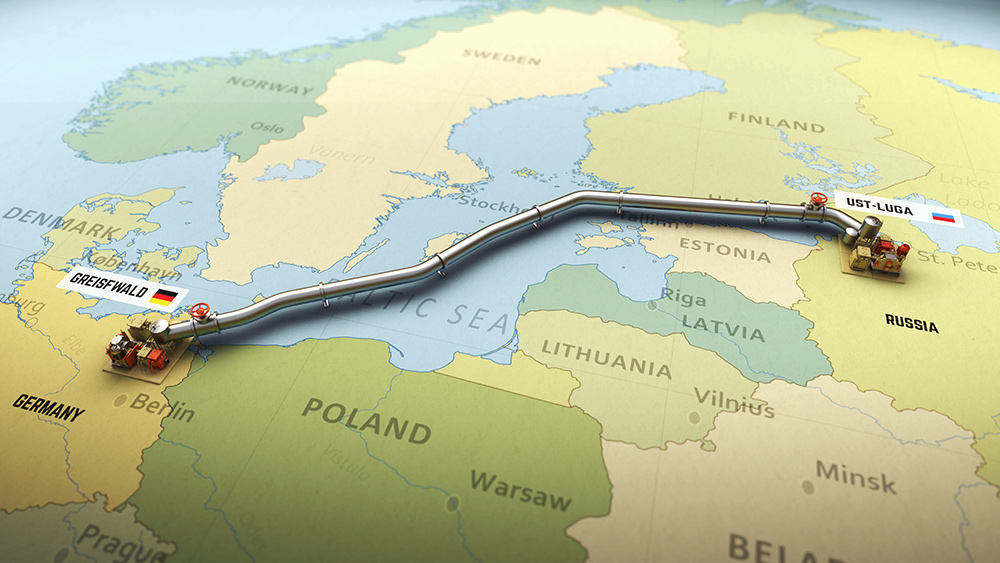Study: Overnight charging of EVs destabilizes America’s power grid
09/28/2022 / By Belle Carter

A study conducted by Stanford University scientists and published in the journal Applied Energy has found that it costs more to charge electric vehicles (EVs) at night. Worse, doing so could stress out the local electric grid and make it unstable.
The study authors suggested that drivers charge their vehicles at work or in public charging stations. They also said daytime charging at a public station reduces “greenhouse gas emissions.”
“We encourage policymakers to consider utility rates that encourage day charging and incentivize investment in charging infrastructure to shift drivers from home to work for charging,” said Ram Rajagopal, the study’s co-senior author and an associate professor of civil and environmental engineering.
Amid the “climate change” manifestations such as frequent forest fires, widespread flooding and stronger hurricanes, car companies are expecting people to start investing in electric-powered cars, especially since California is banning the sale of new gasoline-powered vehicles starting in 2035.
America’s most populous state and the center of U.S. car culture made this decision to push for the “battle against climate change.” Electric cars make up one million or six percent of automobile sales in the Golden State and the state’s goal is to increase that number to five million electric vehicles by 2030.
But the researchers said the switch from gas to electric will cause a strain on the electric grid when EVs make up 40 percent of cars on the road.
“We were able to show that with less home charging and more daytime charging, the Western U.S. would need less generating capacity and storage, and it would not waste as much solar and wind power,” explained Siobhan Powell, a doctor of mechanical engineering and lead study author.
She added that all states, not just California and western states, may need to rethink electricity pricing structures as the EV charging needs increase and their grid changes.
The research team estimated that if half of the vehicles in the western United States are electric, it would take over 5.4 gigawatts of energy storage, which is equivalent to five large nuclear power reactors, to charge the cars. However, if people charged their electric cars at work instead of at home, the electric demand is expected to go down to 4.2 gigawatts.
“The findings from this paper have two profound implications. The first is that the price signals are not aligned with what would be best for the grid and for ratepayers. The second is that it calls for considering investments in charging infrastructure for where people work,” said Ines Azevedo, associate professor of energy science and engineering and co-senior author.
Collapsifornia: Latest power grid problems are just the beginning
Due to the scorching heat during summer, California’s power grid is now on the brink of collapse. This puts Governor Gavin Newsom on defense as he touted the state’s “nation-leading” climate goals.
According to Newsom, the state kept the lights on because of its efforts to bolster renewable energy. “Went right up to the edge of breaking our grid, but it didn’t,” he said at a Clinton Global Initiative event in New York City for Climate Week at the United Nations. “This transition worked.”
But critics highly doubt this as the state government came to its recent decisions to postpone the closure of its last nuclear plant and to extend the life of some natural gas-fired facilities. Experts say the state is quite far from achieving its most ambitious energy goals.
“Greener” power supplies such as wind and solar are making it hard to progress toward the state-mandated goal of a grid that’s 100 percent emissions-free by 2045. Renewables have provided 36 percent of the state’s power supply on average so far this year.
Moreover, the 10 days of triple-digit temperatures in the state this month sent power demand surging to a record level, nearly forcing state regulators to order rolling blackouts, which critics say could make for a political disaster. (Related: Blackout risk in California: EV owners told to avoid charging their vehicles or the power grid might collapse.)
“Oh, my lord, we are in a very bad situation compared to even the worst case that we anticipated,” said Siva Gunda, vice chair of the California Energy Commission.
According to state Sen. John Laird, not enough is being done to avoid a worrying gap in power supply in the future. The Democrat lawmaker from Santa Cruz has argued the state needs massive new investment in renewable energy and batteries to move off fossil fuels.
“We have to make sure that we have more wind, we have more solar, we really develop offshore wind, get out of the way of some of the developed renewables so that they come on the grid,” Laird said.
Visit PowerGrid.news for more updates on the current situation of power grids throughout America
Watch this video about the irony of California’s banning of gasoline-powered cars and impending power grid collapse.
This video is from the Willow channel on Brighteon.com.
More related stories:
ROLLING BLACKOUTS announced in California as power grid craters under record demand.
America’s infrastructure is falling apart, as evidenced by water supply and power grid failures.
Electricity shortages are coming, warn power grid operators.
Wind power FAILING in Texas as power grid pushed to brink of collapse.
Sources include:
Submit a correction >>
Tagged Under:
big government, Blackouts, California, Climate, Collapse, electric vehicles, electricity, energy crisis, energy supply, EVs, Gavin Newsom, Green New Deal, green tyranny, grid collapse, power, power grid, real investigations, truth
This article may contain statements that reflect the opinion of the author
RECENT NEWS & ARTICLES
COPYRIGHT © 2017 POWER NEWS



















